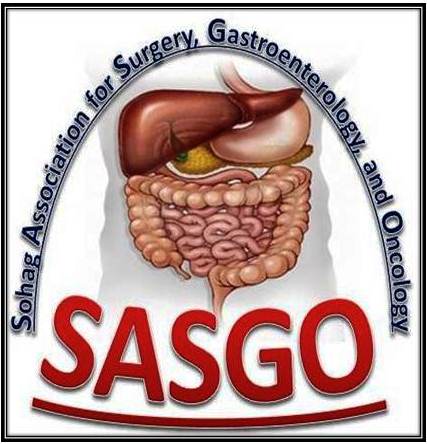Ulcerative colitis (UC) is an inflammatory disease of the colon and rectum limited to the mucosa, and may vary in severity from a mild intermittent disease to an acute fulminant and potentially fatal disease requiring urgent surgery. Management of ulcerative colitis depends on severity, extent, and duration of the disease, response and tolerance to medication, patient age and comorbidity as well as patient preference.
Surgery plays an important role in the management of UC both because of the premalignant nature of the disease, and because of the periodic failure of medical management.
The underlying rationale for surgical treatment of the disease is that the disease is confined to the colon and rectum, and therefore proctocolectomy is curative.
The goal of surgical therapy for ulcerative colitis is to remove the disease with as little alteration of normal physiological functions and lifestyle as possible.
Four surgical options exist for patients with ulcerative colitis and each has its own advantages and disadvantages.
The surgical choices are:
1.Proctocolectomy and Brooke ileostomy.
2.Abdominal colectomy and ilcorectal anastomosis.
3.Proctocolectomy and Kock pouch.
4.Restorative proctocolectomy with ileal pouch-anal anastomosis (IPAA).
The choice of operation requires consideration of the advantages and disadvantages of each option and must be tailored to an individual patient's needs and circumstances. Important factors to be considered in the choice of operation include the indication for surgery, age, associated medical conditions, body habitues, presence of malignancy, and quality of the anal sphincter. Extensive preoperative education is required which should include discussion with both enterostomal therapists and patients who have received similar operations previously.
There have been few randomized controlled trials in regard to surgery for ulcerative colitis (level 1 evidence). Most studies have used non-randomized concurrent controls or historic controls (level 3 & 4 evidence) or are case series (level 5).
Indications for surgery
Fulminant colitis
Fulminant colitis is a severe attack of colitis with bloody diarrhoea, abdominal pain and fever. Signs of systemic sepsis such as tachycardia, hypotension, and leucocytosis are common. Massive hemorrhage may occur. Maximal medical support consisting of intravenous fluids, total parental nutrition, and intravenous steroids is the standard initial treatment if there are no signs of peritonitis. Failure of clinical improvement in 24 to 48 hour or deterioration is a strong indication for operation (level 4). Early surgical intervention has been shown to minimize the risk of complications (level 4).
Toxic Megacolon
Toxic megacolon is the acute dilatation of a segment of the colon with associated toxicity. The degree of dilation is not the sole factor in assessing severity but also the degree of toxicity (level 5). Though the greatest dilation is usually seen in the caecum, which can extend to 9–15 cm in toxic megacolon (level 5), it is when the transverse colon distends to greater than 6 cm where it crosses the lumbar vertebral body toxic megacolon can be diagnosed (level 4). Hypokalaemia, antidiarrhoeal medications and barium enema examinations have all been reported to predispose to development of toxic megacolon (level 5). Aggressive medical management is indicated. At least twice daily abdominal examination by experienced staff and daily radiographs are needed to exclude perforation. The majority of patients are on steroids which can make physical assessment unreliable and there may be a paradoxical decrease in the frequency of bowel motions as the condition deteriorates. Failure to improve in 24 to 48 hours, deterioration of clinical status and perforation are indications to operate (level 4). Perforation increases mortality from 4% to 40% (level 4).
Unresponsive to medical management
Ulcerative colitis in the majority of patients can be controlled by medical management. Intensive medical therapy is indicated if a patient's disease becomes unresponsive to maintenance treatment. This usually requires hospital admission and the use of intravenous steroids to induce remission. Patients who fail to respond to medical management should be considered for surgery.
Trials of cyclosporin have suggested some benefit by induction of remission but with a high rate of early relapse (level 1). At present cyclosporin should be best considered as a means of possibly converting an emergency operation into an elective operation and therefore possibly avoiding one step (emergency abdominal colectomy) of a three staged restorative procedure. Agents to modify the cytokine response are on trial at the present time and may find there way into routine clinical practice in the next few years but at present are best considered experimental, and should be used only in the context of controlled clinical trials.
Patients on long term steroids despite use of immunosuppressive agents (eg. azathioprinc) should also be considered for surgery. In addition some patients may elect for surgery because of the duration of symptoms, frequency of relapses, drug side effects or the concern about the development of malignancy in long standing disease.
Dysplasia and cancer
There is a long-term risk of patients with UC developing colorectal carcinoma (level 1). Risk depends on duration and extent of disease. After 20 years of disease the risk is approximately 3–10% and rises 1–2% yearly thereafter. Risk is highest in those with pancolitis and minimal in patients with proctitis alone. Colonosocpic surveillance aims to prevent this by screening for dysplasia, or failing this, to detect cancer at an early stage. Dysplasia usually does not occur in the first 7 to 10 years of the disease. Colonscopic surveillance with multiple random and lesion directed biopsies is recommended after this period at intervals of between one and three years. Earlier surveillance may be indicated especially with a family history of colorectal carcinoma.
The architectural and nuclear changes in dysplasia have been standardized by the Inflammatory Bowel Disease-Dysplasia Morphology Study Group. Difficulty can arise differentiating dysplasia from regenerative changes secondary to inflammation. Biopsy material should be classified as negative (normal mucosa, quiescent or active colitis), indefinite, low-grade dysplasia and high-grad dysplasia. The finding of confirmed high-grade dysplasia is an indication for resection. The finding of low-grade dysplasia or indefinite features warrants an increase in frequency of surveillance. The higher the grade of dysplasia the higher the chance of finding a coexisting carcinoma in the colectomy specimen; high grade dysplasia 40%, low grade 1–3% (level 4). Recently however it has been suggested that even low grade dysplasia should be an indication for surgery. This is at present a minority view but these findings and their significance need to be discussed with the patient who may elect to have a resection rather than continuing with intensive surveillance. One of the major problems with the endoscopic surveillance and random mucosal biopsy strategy is that up to 30% of colons removed because of the development of carcinoma will have no detectable dysplasia remote from the tumor (level 5).
Dysplasia-associated mass lesions (DAML) is the endoscopic finding of a mass, plaque or multiple closely related sessile polyps that when biopsied show evidence of either low or high-grad dysplasia (level 5). The finding of DAML is an indication for surgery because there is a greater than 50% chance of the presence of an invasive carcinoma.
Severe extraintestinal manifestations
One-third of patients with UC suffer from extraintestinal manifestations (table II). Many of the extraintestinal manifestations of UC are related to disease activity and will improve after colectomy. However neither ankylosing spondylitis or primary sclerosing cholangitis are improved with surgical resection of colonic disease.
Extraintestinal manifestations in chronic ulcerative colitis.
Growth retardation in children
Severe growth retardation is reported in children with UC due to the effect of chronic illness, malnutrition and steroid use. The assessment of growth retardation can be difficult because of delayed puberty and delayed bone age. In patients with growth retardation resection is advocated prior to the closure of epiphysial plates.


